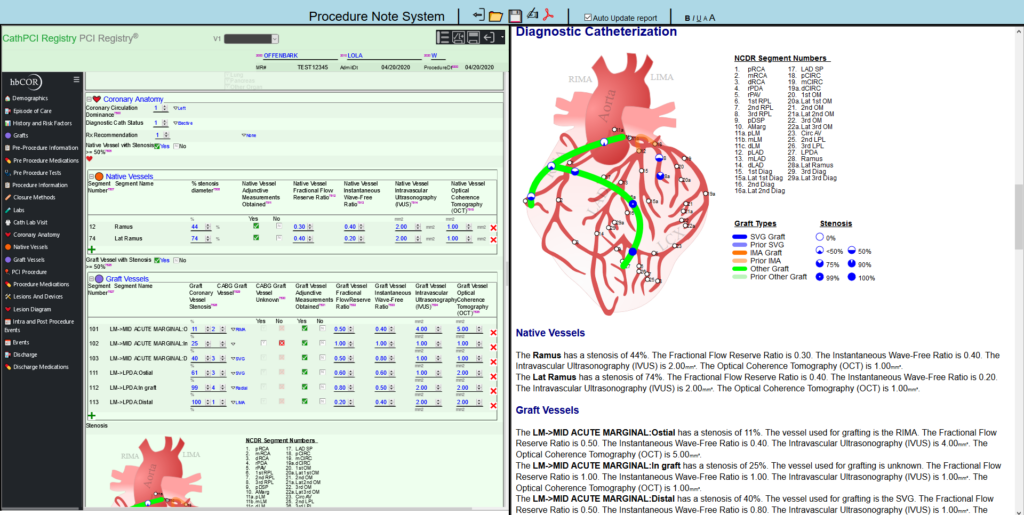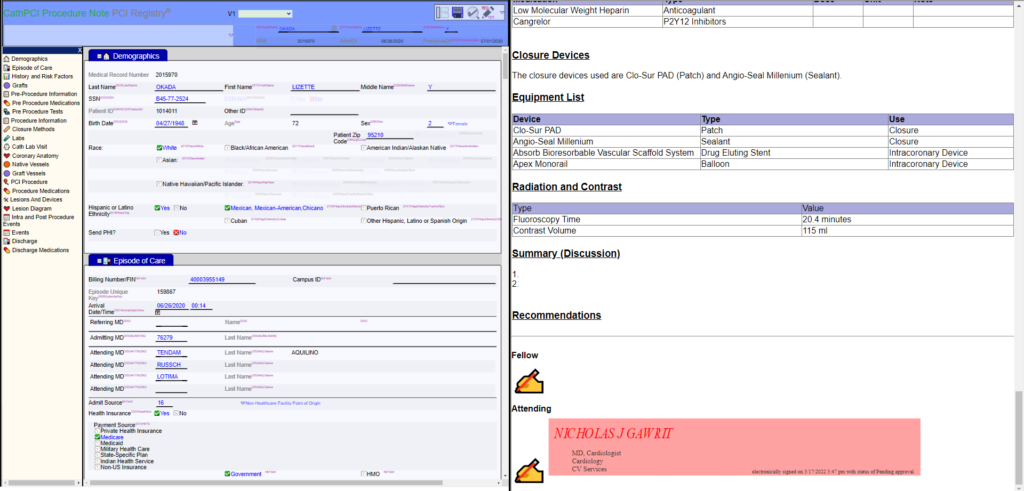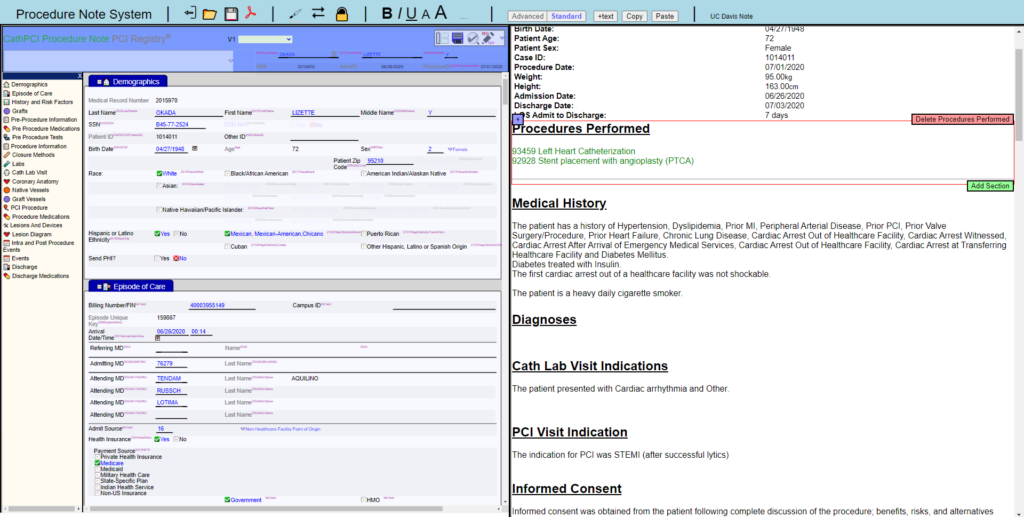

The heartbase hbNote differs from other structured reporting solutions by maximizing registry and other clinical discrete data fields in an interactive platform that allows users to interact with both the data collection form and narrative report side-by-side to reduce redundant data collection and expedite note creation. This “data first” model provides the hospital with an actionable analytics data set and ensures that the physician’s final report will always align with the patient record. Custom paragraph text and a complete coronary tree are included in the note, which can be tailored to meet the preferences of your hospital’s providers.
This process incorporates the Health Policy Statement for structured reporting for the Cardiac Catheterization Lab, IHE Cardiac Procedure Note (CPN), and was developed with collaboration from physician champions from IHE & HRS participant hospitals.
With templates for CABG/Valves, ICD Implant/Explants, Catheterization, and more – the hbNote offers an innovative noting solution for your entire cardiac suite.
Key Features
As users enter data on the hbNote data entry forms, the narrative report automatically generates in an interactive side-by-side view. Additional findings can be entered manually or dictated with software solutions such as Dragon Medical One. A fully interactive coronary tree is available to enter & display graft & stenosis values.
Various interface/interoperability options are available within the hbCOR platform. Depending on the desired workflow, different interfaces are recommended.
Interfaces include: HL7 ADT, Hemodynamic Monitoring System, EP Recording Equipment, & various EHR extracts to populate data from custom flowsheets or relevant EHR modules.
Heartbase provides standardized templates for each procedure. However, we understand that each provider has different preferences for their notes, and we will adapt the templates to the site-specific needs as part of the scoping process.
Additionally, providers can customize their hbNote templates individually by adjusting the mapped data elements and paragraph sections on-the-fly within the narrative report and save adjustments as custom paragraphs for future use.
For the CathPCI, EP, & Structural Heart templates/workflows, the hbNote platform adheres to the Health Policy Statement for structured reporting for the Cardiac Catheterization Lab and IHE Cardiac Procedure Note (CPN). These IHE profiles set standards for interoperability between cardiovascular service lines, streamline data collection to help hospitals meet registry goals, and maximize compliance to MACRA and MIPS.
The hbNote system automatically generates all relevant CPT codes to include ICD-10 Procedure & Diagnosis codes to ensure the patient is coded correctly. Retrospectively, heartbase will evaluate the DRG code via the hbRecon toolkit once all registry data is captured for the Episode of Care.
hbNote Workflow
-
Initial Consult
Data collection can begin during physician consult. Registry & procedure note related data will route automatically to the hospital once the patient is admitted.
-
Pre-procedure Assessment
Nurse provides appropriate assessment. Data collection for procedure note continues during this step.
-
Procedure Note
The note is automatically generated from the discrete elements captured, adheres to the IHE CPN profile, if applicable, & allows for dictation of additional findings through transcription tools such as Dragon.
-
Follow-up
Heartbase provides tools to aid the follow-up process, and also tracks individual and aggregate readmission data.
-
PT Admission
EHR data, including ADT, matches with initial consult visit data and an email notification is sent to the physician.
-
OR/Cath/EP Lab
Users capture data either in existing hospital systems such as the hemodynamic monitoring system or a flowsheet in the EHR to populate data or directly enter within the hbCOR platform.
-
PT Discharge
Once the patient is discharged, additional ACC-NCDR /STS data can be collected. Heartbase can also import coding, cost, and charge data to provide merged clinical-financial reporting & DRG scoring.



